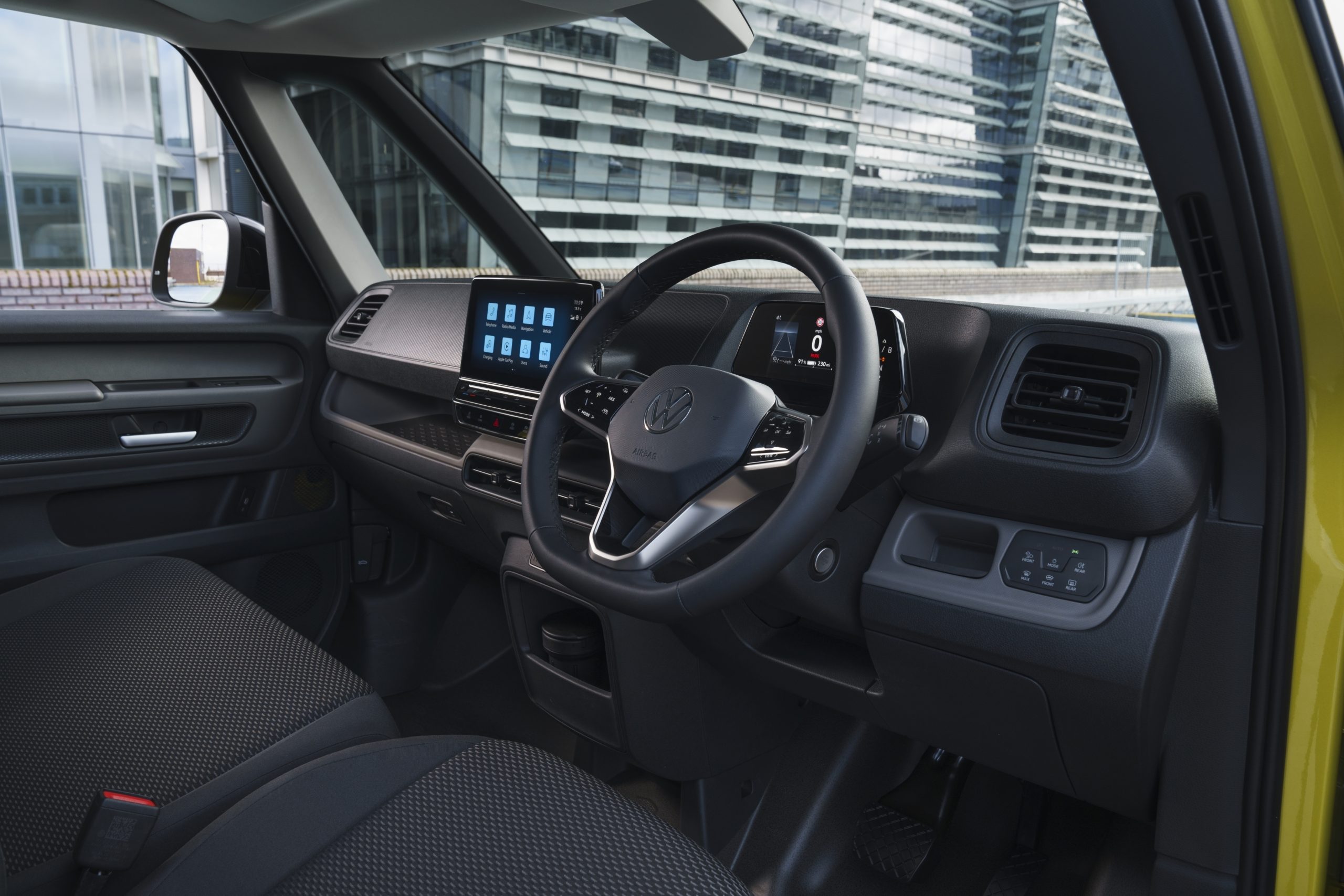How long can a car be parked on a residential street?


To understand the legal regulations for parking on residential streets, you need to know the rules set by the authorities. It is important to learn the time limits for parking on residential streets, as well as the restrictions and parking permits that apply in particular neighborhoods. To avoid the penalties for violating parking regulations, familiarizing yourself with the various sub-sections is necessary.
Time Limits for Parking on Residential Streets
Parking on residential streets is regulated by legal statutes that limit the time a vehicle can park in the said locality. These regulations are essential to ensure that there is access to parking slots for every resident of the vicinity and to maintain traffic mobility.
Here are five crucial points that one must note regarding Time Limits for Parking on Residential Streets:
- Most urban localities have specific time limits for parking that range from 1-4 hours.
- Parking restrictions apply every day of the week, including weekends and public holidays.
- Motorists can be fined heavily or towed away if they violate these regulations.
- The local authorities may grant permits in specific cases where residents require consistent parking within their locality.
- Parking signs are usually posted at strategic locations to inform motorists about the specific restrictions and allowances in respective areas.
Furthermore, it is important to note that some residential areas feature unique parking guidelines, such as “alternate-side” restrictions or “no-street-cleaning-day” rules. It is advisable to check with your local authority or council website for more information regarding these rules in your area.
Pro Tip: Always check for specific street signs indicating parking regulations before deciding on where to park your vehicle.
Getting a residential parking permit is like winning the lottery, except the prize is just a piece of paper and the odds are worse.
Residential Parking Permits and Restrictions
Residents can obtain permits for on-street parking near their homes. However, these permits come with specific restrictions and regulations to ensure that the streets remain accessible. The number of permits issued is limited, and vehicles must display them visibly to avoid fines or towing.
Permits are usually available only to residents who have registered their cars at their residential address. Additionally, they are not transferable, which means that they cannot be used for another household’s vehicle or guests’ cars. In some areas, visitors may be eligible for temporary permits but within specific hours or days.
Moreover, failing to comply with the rules may result in tickets or impoundment. Residents should be aware of these restrictions and comply with them properly to avoid inconvenience and any legal repercussions.
According to the City of Los Angeles Transportation Department website, “Each permit district has designated times when enforcement officers check for permits.” It is essential to adhere to the designated times to avoid penalties.
Penalties for Violating Parking Regulations
When it comes to disregarding the legal regulations for parking on residential streets, perpetrators can incur various penalties. These include fines, towing, impounding of vehicles, and even driver’s license suspension or revocation. It is important to know and follow these regulations to avoid such consequences.
- Failing to move a parked car within the time limit: Fines up to $100/ day
- Parking at the fire hydrant: Fines up to $1000/ incident + towing
- Parking in a disabled spot without proper markings: Fines up to $1500/incident and/or license revocation
- Parking in a “No Parking” zone: Fines vary depending on location but typically range from $60-$500/incident
- Blocking a driveway or pedestrian crossing: Fines vary by location but can range from $50-500/incident
It is essential to note that some areas may have unique or lesser-known regulations than those mentioned in paragraph 2. For example, homeowners associations might have their own set of rules regarding residential parking. Understanding these specific laws before parking is vital.
Pro Tip: Always check local guidelines before parking on any residential street. This can help save you from receiving expensive fines or penalties for violating legal regulations associated with residential street parking violations.
Policy and Enforcement of Residential Street Parking Regulations
To understand the policy and enforcement of residential street parking regulations with local government policies on residential street parking, enforcement of residential street parking regulations, and citizen complaints and dispute resolution for residential street parking issues as solutions.
Local Government Policies on Residential Street Parking
For those residing on city streets, Local Governments have created specific policies around parking to prevent chaos. The policies generally focus on enforcing parking regulations and permits for residents and visitors. This ensures that the parking spaces available cannot be misused by non-residents or businesses, preserving them for use by people who live on the street.
Furthermore, local governments create dedicated zoning maps of residential areas to divide them into zones and establish rules for parking in those zones. They also create separate rules for commercial areas to guarantee they don’t affect residential street parking arrangements. To keep abreast of changes, local governments regularly update these guidelines, printing out signs designating specific areas as no-parking zones, loading zones, permit-only areas, and more.
It is also significant that Local Governments extend policy enforcement equally to all residents. Parking regulation tickets given only within certain zones or streets alienate some individuals. Therefore, Regular monitoring of violated parked cars needs to occur parallelly throughout each region.
Pro Tip: Knowing your neighborhood’s parking policy before moving in can save you from unnecessary troubles and extra expenses.
Enforcement of Residential Street Parking Regulations
Parking enforcement in residential areas involves the implementation and monitoring of rules regulating street parking. Proper enforcement strategies lead to better traffic flow, increased safety, more efficient allocation of curb space, and an improved quality of life for the residents. Effective techniques include ticketing, towing, patrolling and issuing permits as appropriate. The regulations help reduce traffic congestion by ensuring compliance with parking restrictions while creating harmony between residents and visitors.
Technology advancements have made it easier to monitor parking violations accurately. Using sensors, cameras and mobile applications help authorities track and enforce rules more efficiently and appropriately. Additionally, significant concerns such as emergency response vehicles offers specific directives on street parking regulations that must be enforced.
It is essential to ensure that enforcement policies apply equitably across all communities based on need and demand. For example, high-density areas or neighborhoods affected by severe commuter impact should experience more robust enforcement measures compared to less densely-populated regions.
According to a study conducted by the National Cooperative Highway Research Program (NCHRP), up to 30% of traffic is caused by drivers searching for a place to park. Therefore, proper policies surrounding street parking are essential in maintaining an efficient transport system while curbing issues faced in highly populated cities such as traffic congestion.
Citizen Complaints and Dispute Resolution for Residential Street Parking Issues
The process of addressing concerns regarding residential street parking issues varies based on individual circumstances. Residents may submit complaints or disputes about parking to local authorities for resolution. These cases are handled based on the regulations set forth by the local government. It’s crucial for citizens to become familiar with these regulations, including restrictions, permit requirements, and exceptions.
In some cases, mediation is offered as a dispute resolution option. This type of approach requires both parties to meet and discuss their concerns while attempting to reach an agreement that benefits all parties involved. Mediation can be effective in reducing tensions and avoiding legal action.
Citizens must also consider any alternative methods of dispute settlement if necessary, such as arbitration or litigation. These options are more formal and often require legal representation, but they may be useful in resolving matters that cannot be resolved through informal means.
It’s essential for residents to recognize the benefits of following established guidelines when dealing with residential street parking problems. Taking proactive measures like obtaining appropriate permits and avoiding noncompliance with relevant laws can prevent disputes from arising and reduce conflicts between neighbors.
With limited parking spaces available, it’s critical for citizens to understand the policies around residential street parking regulations and how disputes can be addressed effectively. Failure to comply with these rules may result in heightened tensions among neighbors or even legal consequences. It’s important for individuals to educate themselves on these laws and take steps towards resolving conflicts in a constructive manner. Don’t let misunderstandings over parking create unnecessary stress – stay informed and keep lines of communication open!
Alternatives to Parking on Residential Streets
To explore alternative solutions for residential street parking challenges, consider public and private parking lots, parking garages and structures for long-term parking, or utilizing public transportation or carpooling to reduce parking demands. These solutions offer options beyond parking on residential streets and can help alleviate traffic congestion and limited parking availability.
Public and Private Parking Lots in Residential Areas
Public and Private Parking Spaces in Residential Communities
Need to avoid parking on residential streets? Consider using convenient public or private parking lots that can accommodate any vehicles. Here are a few details about the availability of these parking spaces within residential areas:
- Public lots are usually owned and maintained by local municipalities, which means they are usually open and accessible to anyone. They offer affordable alternative parking spaces for visitors and others who require temporary or long-term parking.
- Private lots, on the other hand, may require a fee or permit to park there. These facilities could be owned by businesses or apartment complexes, providing an exclusive option for residents who need designated parking spots near home.
- Both options provide several advantages over on-street parking, including reduced traffic congestion, increased safety, and lower usage of street space.
- In addition to designated overnight parking lots, some neighborhoods create auxiliary spaces in existing public areas such as swimming pool or rec center parking areas after hours.
- Note that homeowners’ associations may contain their own rules regarding where cars can be parked in residential communities.
Additional tips: When determining whether a particular public or private lot is right for you, it’s important to consider location, safety concerns, accessibility to your home, cost (if there is one), and available amenities.
In terms of unique details, both public and private lots have different operating hours with unique security protocols put in place. Additionally, specific designations like handicap reserved spots are important features present in more extensive private lots but less commonly seen in limited communal ones.
Historically speaking, this movement began gaining traction during urban planning originating from the mid-twentieth century onwards with several northern US cities instituting alternate-day walking schedules whereby cars had access to specific residential streets on odd or even numbered dates depending on the corresponding car license plate number. This major shift was due primarily to reduce vehicular dependence while increasing walkability and bike-riding.
Parking Garages and Structures for Long-Term Parking
For those seeking alternatives to parking on residential streets, there are options such as utilizing parking garages or structures for long-term parking. These options provide secure and safe locations to park vehicles for extended periods of time.
To illustrate the benefits of using these options, the following table provides a comparison of various parking garages and structures in the area:
| Parking Garage/Structure | Location | Cost per Day | Security Features |
|---|---|---|---|
| Central Parking | Downtown | $22 | Video Surveillance |
| ABC Parking | Midtown | $18 | Gated Entrance |
| XYZ Garage | Uptown | $20 | On-Site Attendant |
As seen in the table above, each option offers varying costs and security features depending on their location. It is important for individuals to evaluate their needs and choose the option that best fits their circumstances.
When considering long-term parking solutions, it may be helpful to research any discounts or loyalty programs offered by certain garages or structures. Additionally, some may offer monthly parking plans that can result in significant cost savings over time.
Pro Tip: Before choosing a long-term parking solution, thoroughly research each option’s security measures and reputation to ensure the safety of your vehicle.
Utilizing Public Transportation or Carpooling to Reduce Residential Street Parking Demands
Using Public Transit and Carpooling to Relieve Residential Street Parking Stress
Living in areas where parking spaces may be limited can be a frustrating experience, particularly when it comes to finding space on residential streets. Rather than contributing to the problem by parking your own vehicle on the street, consider utilizing public transportation or carpooling with others in order to alleviate the demand for parking spaces.
By reducing the number of individual vehicles parked on residential streets, traffic congestion can also be reduced, thus creating a more efficient transportation system overall. Public transit systems often have designated pick-up and drop-off points near residential areas, making it convenient for residents who choose not to drive.
Additionally, carpooling is becoming increasingly popular as people look for ways to reduce costs related to vehicle ownership as well as reduce their carbon footprint. By sharing rides with colleagues or neighbors, there will be fewer personal vehicles contributing to the parking dilemma on residential streets.
It’s worth noting that there are plenty of alternative options available; electric scooters and bikes are also becoming more commonplace in many cities around the world. These devices offer an affordable and environmentally friendly mode of transport without contributing to traffic congestion or taking up unnecessary space on residential streets.
According to Forbes Magazine, approximately 100 million Americans currently use public transportation each year.
Factors Affecting Residential Street Parking
Understanding the factors affecting residential street parking, residential density and parking availability, street width and accessibility for emergency vehicles, and parking history and trends in the neighborhood are some of the key sub-sections to consider.
Residential Density and Parking Availability
Residential areas have a significant impact on the availability of parking spaces. The number of people residing in a particular area and the amount of space within the area affect how easily residents can find parking.
Below is a table showcasing data on Residential Density and Parking Availability:
| Residential Density | Number of Parking Spaces |
|---|---|
| Low | High |
| Medium | Moderate |
| High | Low |
Interesting details regarding this topic include that residential density is often associated with limited parking in cities, making it challenging for residents to secure available spots without resorting to illegal parking. Additionally, studies show that higher-density residential areas have a lower supply of accessible parking spaces.
Pro Tip: Urban planners should consider incorporating scalable solutions such as shared or co-op parking arrangements in high-density residential zones, thereby increasing overall accessibility while decreasing illegal parking incidents.
Street Width and Accessibility for Emergency Vehicles
The width of residential roads and their accessibility to emergency vehicles play a vital role in determining street parking availability. Narrow roads and inadequate accessibility can restrict the flow of traffic and make it challenging for people to park their cars.
Insufficient space on narrow streets can lead to congestion, making it difficult for residents to find parking spots. Additionally, if emergency response vehicles like fire trucks or ambulances are unable to access an area due to narrow roads, the safety of residents could be at risk. Therefore, creating sufficient width and accessibility for emergency vehicles is crucial for ensuring safe street parking.
Furthermore, ensuring that there are no obstructions on the road, such as parked cars or garbage bins placed too close to the curb, will ensure smooth traffic flow and provide adequate space for emergency vehicle movement.
To avoid missing out on available parking space and improve safety within a residential area, it’s essential that street widths are designed with emergency vehicle access in mind. Proper planning can ensure enough width and facilitate easy traffic flow, allowing residents to park their cars safely without obstruction or fear of getting towed away.
Parking History and Trends in the Neighborhood
Analyzing the Patterns of Residential Parking in the Vicinity
It is essential to analyze the patterns of parking in a neighborhood to understand the factors that affect parking. Factors such as population density, availability and affordability of parking, community living and social norms are closely related to residential street parking. The historical trend of parking indicates changes in lifestyle requirements and adaptations. Understanding these nuanced trends helps policy-makers develop solutions that are tailored to specific needs.
In addition, residential street parking has a direct impact on property value and community satisfaction. Hence, local authorities need to monitor the trends as well as intervene when necessary. By understanding these patterns, residents can avoid getting fined for illegal parking or worse losing their permits.
For instance, many neighborhoods experience an increase in university students’ influx during peak academic sessions or seasonal events/parties that cause unprecedented congestion. Therefore, assigning temporary metered space or resident-only parking drives-off commuter parkers who take up spaces intended for residents.
Marketers can also utilize this information by promoting high valued properties with adequate off-street parking spaces to attract potential buyers or renters. Ultimately, monitoring and reacting to changing patterns of residential street parking will aid everyone involved in maintaining orderliness on the roads while keeping residents’ rights at the forefront.
Don’t lose out on insights regarding your local neighborhood’s streets – keep up with local policies and regulations!
Maintaining Safe and Accessible Residential Streets
To maintain safe and accessible residential streets, you need to consider responsible and courteous parking for all residents, balance the needs of motorists, pedestrians, bicyclists, and public transit, as well as improve the street infrastructure and signage. Encouraging responsible parking practices on residential streets is an important part of maintaining safe streets. Balancing the needs of different road users can help prevent traffic congestion and accidents. Finally, improving infrastructure and signage can help promote safe and accessible parking practices for all.
Encouraging Responsible and Considerate Parking for All Residents
Encouraging Responsible and Civil Parking Among All Residents
Parking etiquette is an essential element in the safety and accessibility of residential streets. Ensuring responsible and considerate parking is crucial in preventing accidents, conflicts, and traffic congestions.
To encourage responsible and civil parking among all residents, here are five points to keep in mind:
- Always park in designated parking spots, avoiding driveways and sidewalks.
- Do not park too close or across another vehicle, making it challenging for other drivers to maneuver through tight spaces.
- Avoid double-parking unless it’s an emergency or if a permit is available for such situations.
- Resist blocking access ways just because you’re running “quick errands.” That blocks the flow of traffic.
- Be mindful of the disabled, elderly, and visitors’ needs by reserving accessible parking spots for them.
It’s important to note that encouraging responsible and civil parking shouldn’t be one-sided. The responsibility should also apply to visitors who come into the residential areas.
A unique approach would be to make public announcements or activate signage that emphasizes appropriate parking behaviors during educational campaigns like workshops, fairs or events with engaging activities.
According to the U.S Department of Transportation (USDOT), almost 20% of non-fatal road accidents were due to inappropriate use of parking spaces.
It’s everyone’s responsibility to promote safe driving behaviors by embracing peaceful co-existence on the roads.
Balancing the Needs of Motorists, Pedestrians, Bicyclists, and Public Transit
The cohesive coexistence of Motorists, Pedestrians, Bicyclists, and Public Transit is of utmost importance in the maintenance of safe and accessible residential streets. To ensure this successful blend, the needs of each group must be taken into consideration.
To better understand how each group’s needs can be beneficially balanced on Residential Streets, consider the table below:
| Group | Needs | Accommodations |
|---|---|---|
| Motorists | Efficient use of roadways | Adequate lanes and proper traffic flow |
| Pedestrians | Safe crossing zones | Sidewalks and pedestrian crossings |
| Bicyclists | Safe bike infrastructure | Protected bike lanes or designated bike paths |
| Public Transit | Accessible stops with efficient service | Proper signage and dedicated bus lanes |
Unique details may include implementing speed limits, traffic signals, roundabouts, intersections. Each addition helps to maintain a properly functioning street system.
In fact, according to the US Department of Transportation Federal Highway Administration’s research crash facts for pedestrians (2019), there were 6,205 pedestrian fatalities in motor vehicle-related crashes. Being mindful of everyone’s needs is vital to maintaining safety on residential streets.
Good signage isn’t just for finding your way around the city, it’s also for finding your way out of a parking ticket.
Improving Street Infrastructure and Signage to Support Safe and Accessible Parking Practices
Strengthening the Infrastructure and Signals to Support Safe and Accessible Parking
It is imperative that street infrastructure and signage support safe parking in residential areas. The placement of crosswalks, traffic signals, speed humps, curb cuts, sidewalks, pedestrian ramps and bike lanes must be designed according to specific needs. Clear signage should indicate where street parking is allowed or restricted and where access points for residents with disabilities are located.
To enhance safe parking further in neighbourhoods, local authorities should also ensure that maintenance work is carried out regularly on streets. An uneven road surface could lead to accidents for both drivers and pedestrians alike. Infrastructure upgrades should focus on improving sightlines for vehicular traffic as well as affording safe cycle routes while minimizing disruption.
Pro Tip: Some countries have regulations about how close you can park next to a bus stop or a fire hydrant. Check local bylaws before deciding to park your car.
Before you go…
If your car has been parked on the street for an extended period, the battery may be flat. Here we explain how long it takes to jump a car, and the process to follow to stay safe.











[…] was a customer whose car was parked in direct sunlight for extended durations. He was concerned about the potential risk of […]
[…] the engine: Do not try to keep driving, as this can cause more damage and risk. Find a safe spot to park your car away from traffic and turn off the ignition to allow the engine to cool […]
[…] driver, in particular, learned this lesson firsthand when they parked their car on an active street during Halloween festivities. Despite taking all possible precautions, their vehicle was still […]
[…] additional tip that may help remove moisture involves parking your car in direct sunlight facing away from water sources and with its hood opened. Keeping a humidifier […]
[…] Park your car on level ground and let it cool down. […]